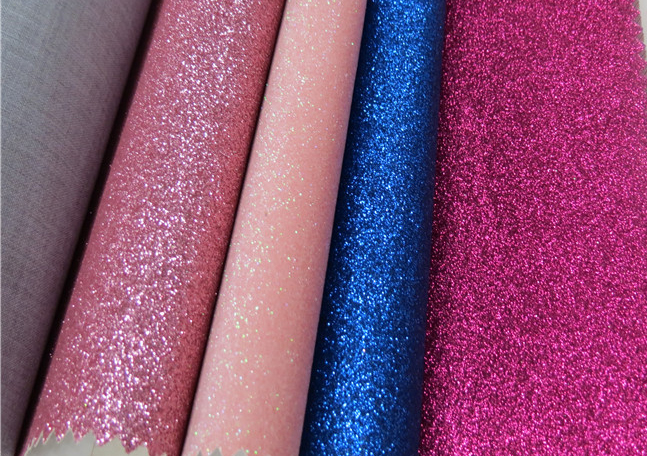What are the definitions of luminous and luminescent materials?:
(1) when a substance is excited (rays, high-energy particles, electron beams, an electric field, etc.), the material will be in an excited state, and the energy of the excited state will be released in the form of light or heat. If this part of the energy is visible, ultraviolet, or near infrared, electromagnetic radiation is called a luminescence process.
(2) luminescence is a substance that emits excess energy in the form of light outside of thermal radiation, and this emission process has a certain duration. What are luminous materials: substances that can achieve the above process are called luminescent materials. The process by which matter absorbs energy in certain ways and transforms it into light radiation (nonequilibrium radiation) is called luminescence; in practice, solids that are excited by the outside world are called luminous materials. They can be used in powder, single crystal, film or non crystal. The main components are rare earth metal compounds and semiconductor materials, which are closely related to non-ferrous metals. All kinds of phosphor in high purity rare earth oxides Y2O3, Eu2O3, Gd2O3, La2O3 and Tb4O7 made, widely used in color TV, color and black and white large screen projection TV, air display, X ray intensifying screen, and used for fluorescent powder production materials, all kinds of ultrashort afterglow lamp. Semiconductor light-emitting materials are ZnS, CdS, ZnSe and GaP, GaAs1-xPx, GaAlAs, GaN and so on. Mainly used in the manufacture of large and medium-sized digital symbols, pattern display, digital display clock, X ray image enhancement screen and long-life color light-emitting diodes, digital tubes and so on. Visible light emitting diode display, because of the fast response and widely applied in instrument, computer, the annual output has doubled, light constantly replace other display the editing type luminescent materials mainly luminescent material classification is various, the main types are: photoluminescence, electroluminescence and cathodoluminescence luminescence, thermoluminescence and optically stimulated luminescence, light radiation etc.. Solid theoretical model of luminescent optical transitions form background luminescence materials to optical transitions of solid solid basic theory with the basic knowledge of light emitting material characterization edit this paragraph photoluminescent material application

Depending on the molecular structure, organic luminescent materials can be divided into:
(1) organic small molecule luminescent materials;
(2) organic polymer luminescent materials;
(3) organic complexes luminescent materials.

These luminescent materials have their own characteristics in light emitting mechanism, physical and chemical properties, and in applications. Organic small molecular materials of various kinds, many of them with conjugated heterocyclic and various chromophore structure, easy adjustment, through the introduction of ethylenically unsaturated group, benzene and various chromophores to change its conjugation length, so that the compound photoelectric properties change. Such as the evil two tetrazole and its derivatives, three compounds and its derivatives, Luo Danming and its derivatives, coumarin derivatives, 1,8- naphthalimide derivatives of pyrazoline derivatives, three aniline derivatives, porphyrin compounds, carbazole, pyrazine, thiazole derivatives, perylene derivatives etc.. They are widely used in optical electronic devices, DNA diagnostics, photochemical sensors, dyes, fluorescent brighteners, fluorescent coatings, laser dyes, [7], organic electroluminescent devices (ELD) and so on. However, small molecule luminescent materials are prone to fluorescence quenching in the solid state. The devices made by doping methods are easy to assemble and crystallize, and the lifetime of devices decreases. Therefore, many researchers are dedicated to the study of small molecules, on the other hand, looking for better performance of light-emitting materials, polymer light-emitting material came into being. Organic polymer optical materials are
usually divided into three categories:
usually divided into three categories:
(1) side chain type: small molecule luminescent group is attached to macromolecule side chain,
(2) all conjugated main chain type: the whole molecule is a large conjugated polymer system
(3) some conjugated main chain types: the luminescence center is in the main chain, but the luminescence centers are separated from each other, and there is no conjugated system. At present, polymeric luminescent materials are mainly conjugated polymers, such as polyphenylene, polythiophene, poly fluorene, poly three phenyl amine and their derivatives. There are poly three phenyl amine, poly carbazole, polypyrrole, porphyrin, [8] and its derivatives, copolymers, etc., there are more studies. The luminescent group can be introduced into the end of the polymer or introduced into the middle of the polymer chain. Kenneth, P., Ghiggino and so on introduce the fluorescent chromophore into the RAFT reagent and connect the fluorescent chromophore to the polymer through RAFT polymerization. Light from the above various polymers can be seen in most of the polymeric backbone conjugation, easy to form a large area of conjugated polymeric backbone, but its solubility and fusibility are reduced, the processing is difficult; and the light emitting polymer end groups were introduced into the polymer chain or intermediate, and only the end light, the molecular weight is not great if the great weight, the light emitting groups in the polymer content is low, the fluorescence is very weak. The side chain polymer luminescent material is a powerful complement to conjugated polymers of main chain.
3. self luminous material often used as a light emitting object. A self luminous object glows in the dark, but does not need to be exposed to daylight. These materials are usually used as luminous markers on the dial and for the production of long-term luminous objects, which contain radioactive elements.
4. phosphorescent objects are light emitting due to the presence of phosphorus, and this material is often referred to as photoluminescent material. Photoluminescent materials: photoluminescent powder is an ideal material for making luminous inks, luminescent coatings, luminescent plastics and luminescent printing pastes. Not only is suitable for the light emitting ink in screen printing effects of various patterns and words such as signs, toys, crafts, glass painting, stickers and so on, but also because of its high transparency, good film-forming, thin coating and other characteristics, in all kinds of relief carvings (statues, porcelain figurines, plaster, pottery, painting, polymer) lighting and other crafts, painting or printing, greatly enhance its value without affecting the original decoration color or lines under. The colors of the luminous ink are transparent, red, blue, green, yellow and so on. The most common application of photoluminescent materials in security is. In safety, photoluminescent materials can be used as exit signs, exit marks, etc.. When used as a marker, the photoluminescence materials must be rigorously tested to ensure that they meet safety standards. Photoluminescent materials are applied in security, different from decorations or other small objects, requiring luminescent materials to maintain the brightest illumination and long duration of illumination.
